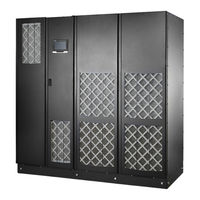User Manuals: Eaton Power Xpert 9395 Plus UPS System
Manuals and User Guides for Eaton Power Xpert 9395 Plus UPS System. We have 2 Eaton Power Xpert 9395 Plus UPS System manuals available for free PDF download: Installation And Operation Manual
Eaton Power Xpert 9395 Plus Installation And Operation Manual (216 pages)
1 UPS 225–275 kVA
Table of Contents
Advertisement
Advertisement
Related Products
- Eaton Power Xpert 9395P-900 Three UPM
- Eaton Power Xpert 9395P-600/600
- Eaton Power Xpert 9395P-600/550
- Eaton Power Xpert 9395P-600/500
- Eaton Power Xpert 9395P-600/450
- Eaton Power Xpert 9395P-600/400
- Eaton Power Xpert 9395P-600/300
- Eaton Power Xpert 9395P-600/275
- Eaton Power Xpert 9395P-600/250
- Eaton Power Xpert 9395P-600/225

